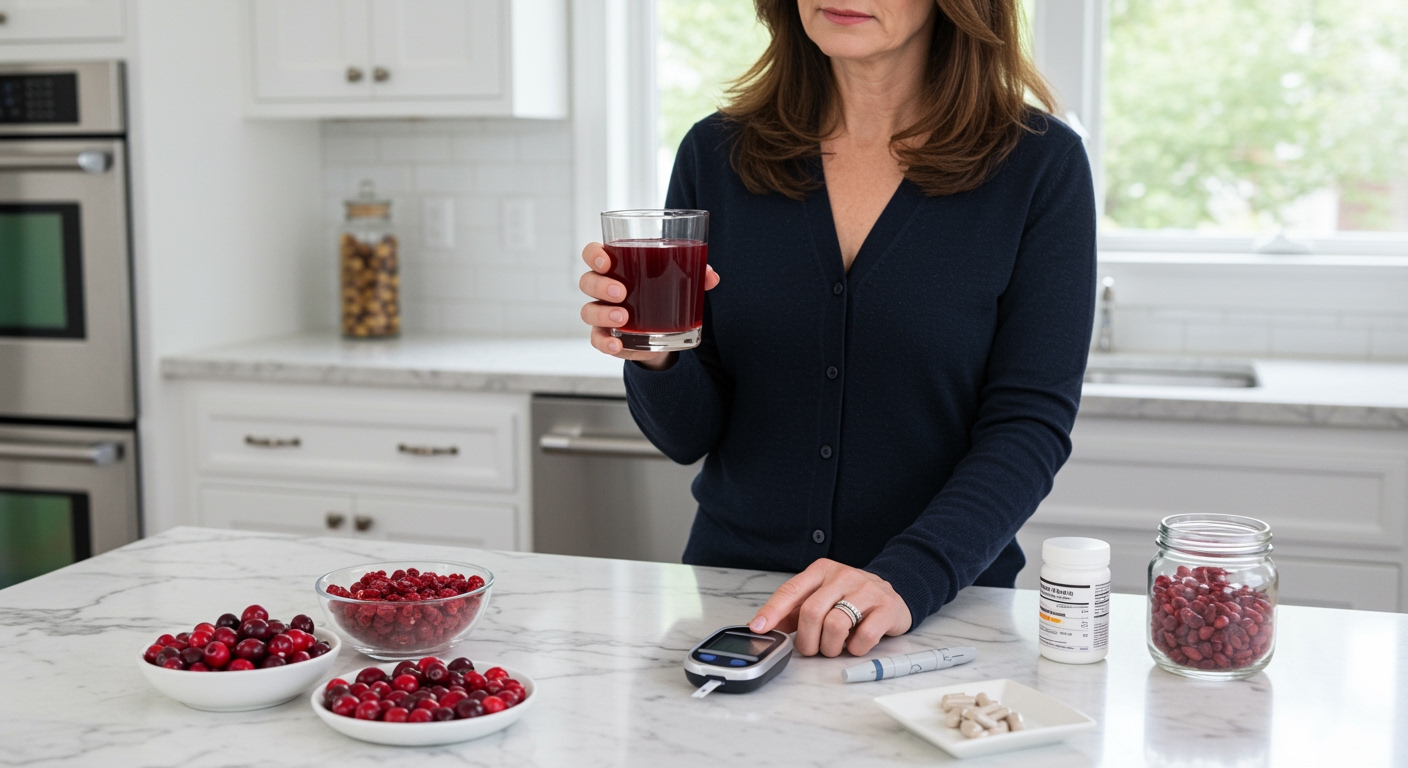✪ Key Takeaway: Fresh cranberries can benefit diabetes management, but cranberry juice and dried cranberries spike blood sugar significantly.
Introduction
Your doctor tells you to eat more antioxidant-rich foods, and cranberries seem like the perfect choice.
You might be wondering if cranberries are safe for diabetes because you have heard conflicting information about their sugar content and health benefits.
Hi, I am Abdur, your nutrition coach, and today I am going to explain exactly how cranberries affect blood sugar and which forms are best for diabetes management.
How Do Fresh Cranberries Affect Blood Sugar?
Fresh cranberries contain only 4 grams of sugar per cup, making them one of the lowest sugar fruits available.
The fiber content in fresh cranberries slows down sugar absorption in your small intestine.
This fiber creates a gel-like substance that forms a barrier around sugar molecules, preventing rapid glucose spikes.
Research shows that fresh cranberries have a glycemic index of 35, which falls into the low category for blood sugar impact.
The anthocyanins in cranberries also improve insulin sensitivity by activating specific cellular pathways that help glucose enter your cells more efficiently.
Your pancreas produces less insulin when you eat fresh cranberries compared to other fruits because the natural compounds help your body use glucose more effectively.
✪ Pro Tip: Eat fresh cranberries with a small amount of healthy fat like nuts to further slow sugar absorption.
Why Is Cranberry Juice Different for Diabetics?
Commercial cranberry juice contains 30-36 grams of sugar per 8-ounce serving, which is nearly 9 teaspoons of sugar.
The juicing process removes all the beneficial fiber that naturally slows sugar absorption in whole cranberries.
Without fiber, the concentrated sugars hit your bloodstream rapidly, causing blood glucose levels to spike within 15-30 minutes.
Most commercial cranberry juices also contain added sugars or high fructose corn syrup to mask the natural tartness.
Your liver processes the high fructose content differently than glucose, converting much of it directly to fat while simultaneously raising blood sugar.
Even 100% pure cranberry juice without added sugars can raise blood glucose significantly because the natural fruit sugars are concentrated during processing.
Studies show that drinking cranberry juice can increase blood sugar by 40-60 mg/dL within one hour in people with diabetes.
✪ Fact: One cup of cranberry juice contains the same amount of sugar as 7-8 cups of fresh cranberries.
What About Dried Cranberries and Supplements?
Dried cranberries are often called “craisins” and contain massive amounts of added sugar to make them palatable.
A quarter cup of dried cranberries contains 22-26 grams of sugar, which is more than a candy bar.
The dehydration process concentrates the natural sugars while manufacturers add even more sugar during processing.
Your blood sugar response to dried cranberries is similar to eating pure sugar because the fiber structure is damaged during drying.
Cranberry supplements, however, provide the beneficial compounds without the sugar load that affects blood glucose.
These supplements contain concentrated proanthocyanidins and other antioxidants that may actually help improve insulin sensitivity.
Research suggests that cranberry extract supplements can reduce inflammation markers and improve glucose metabolism without raising blood sugar.
✪ Note: Always check supplement labels for added sugars or fillers that could affect blood glucose.
How Much Cranberry Is Safe for Diabetics?
You can safely eat 1/2 to 1 cup of fresh cranberries daily without significantly impacting blood sugar levels.
This amount provides powerful antioxidants while keeping your carbohydrate intake under 6 grams per serving.
The key is timing your cranberry consumption with meals that contain protein and healthy fats to slow absorption further.
Your individual glucose response may vary, so testing your blood sugar before and after eating cranberries helps determine your personal tolerance.
Most people with diabetes can handle fresh cranberries better in the morning when insulin sensitivity is naturally higher.
Avoid cranberry juice entirely, limit dried cranberries to special occasions, and consider sugar-free cranberry products if you crave the flavor.
✪ Pro Tip: Mix fresh cranberries with Greek yogurt and nuts for a diabetes-friendly snack that stabilizes blood sugar.
The Bottom Line
Fresh cranberries are excellent for diabetes management because they provide antioxidants and fiber with minimal sugar impact.
“The form of food matters more than the food itself when managing diabetes.”
I would love to hear about your experience with cranberries and blood sugar management, so please share your questions or thoughts in the comments below.
References
At NutritionCrown, we use quality and credible sources to ensure our content is accurate and trustworthy. Below are the sources referenced in creating this article:





